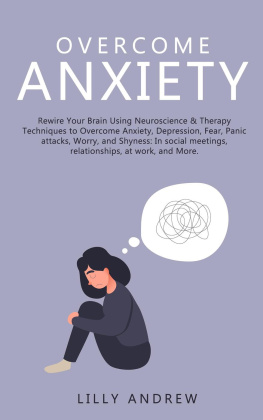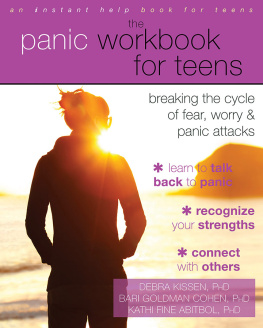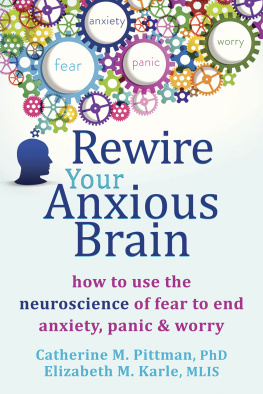Lilly Andrew - Overcome Anxiety: Rewire Your Brain Using Neuroscience & Therapy Techniques to Overcome Anxiety, Depression, Fear, Panic Attacks, Worry, and Shyness: In Social Meetings, Relationships, at Work
Here you can read online Lilly Andrew - Overcome Anxiety: Rewire Your Brain Using Neuroscience & Therapy Techniques to Overcome Anxiety, Depression, Fear, Panic Attacks, Worry, and Shyness: In Social Meetings, Relationships, at Work full text of the book (entire story) in english for free. Download pdf and epub, get meaning, cover and reviews about this ebook. year: 2020, publisher: Lilly Andrew, genre: Religion. Description of the work, (preface) as well as reviews are available. Best literature library LitArk.com created for fans of good reading and offers a wide selection of genres:
Romance novel
Science fiction
Adventure
Detective
Science
History
Home and family
Prose
Art
Politics
Computer
Non-fiction
Religion
Business
Children
Humor
Choose a favorite category and find really read worthwhile books. Enjoy immersion in the world of imagination, feel the emotions of the characters or learn something new for yourself, make an fascinating discovery.
- Book:Overcome Anxiety: Rewire Your Brain Using Neuroscience & Therapy Techniques to Overcome Anxiety, Depression, Fear, Panic Attacks, Worry, and Shyness: In Social Meetings, Relationships, at Work
- Author:
- Publisher:Lilly Andrew
- Genre:
- Year:2020
- Rating:5 / 5
- Favourites:Add to favourites
- Your mark:
Overcome Anxiety: Rewire Your Brain Using Neuroscience & Therapy Techniques to Overcome Anxiety, Depression, Fear, Panic Attacks, Worry, and Shyness: In Social Meetings, Relationships, at Work: summary, description and annotation
We offer to read an annotation, description, summary or preface (depends on what the author of the book "Overcome Anxiety: Rewire Your Brain Using Neuroscience & Therapy Techniques to Overcome Anxiety, Depression, Fear, Panic Attacks, Worry, and Shyness: In Social Meetings, Relationships, at Work" wrote himself). If you haven't found the necessary information about the book — write in the comments, we will try to find it.
Permanently Conquer Anxiety and Break Free from the Panic Attacks & Negative Thoughts with This Practical, Action-Based Manual!
How often you find yourself wanting to hide from the world? You feel like you are invisible and, to be frank, that would be better because you would get overwhelmed otherwise.
Every time you try to be confident, you mess up.
You speak fast and you want to leave the situation as soon as possible, so no one notices.
Work or family gatherings give you chills, and going to a bar or a social event is just an immediate panic attack waiting to happen, and you get anxiety and butterflies in your stomach.
Now imagine this:
If there was a pill that can help you get instant confidence...
You walk into a room full of people. Your energy seems to have its own gravitational pull and draws everyone towards you. They want a piece of the positivity and confidence you are radiating.
Because of that, opportunities start pouring in...
New job, career advancement, networking opportunities, traveling, better friends, and romantic relationships. Its as if you are limitless! Suddenly, your whole life is taking a different positive direction every single day.
Unfortunately, this magic pill does not exist.
But, lucky for you, psychologists, public speakers, and life coaches have figured out certain universal patterns that help you break free from negative thoughts and anxiety attacks while replacing them with celebrity-like confidence and charisma.
Inside this Action-Based Book you will:
Warning: This book is purely for people that really want to improve their lives and destroy their fears! If youre that person, start making the right choices today!
Lilly Andrew: author's other books
Who wrote Overcome Anxiety: Rewire Your Brain Using Neuroscience & Therapy Techniques to Overcome Anxiety, Depression, Fear, Panic Attacks, Worry, and Shyness: In Social Meetings, Relationships, at Work? Find out the surname, the name of the author of the book and a list of all author's works by series.















